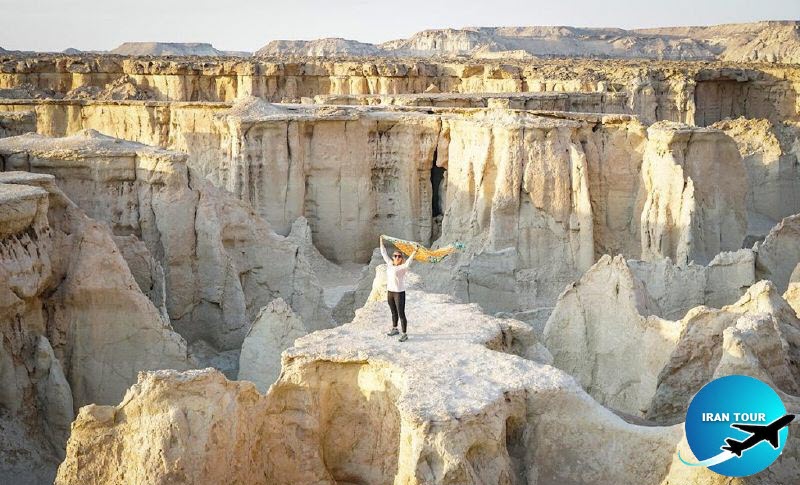Copyright 2020 - 2021 irantour.tours all right reserved
Designed by Behsazanhost
Qeshm the Biggest Island in the Persian Gulf
Qeshm the Biggest Island in the Persian Gulf
The most beautiful island in the south of Iran in the Persian Gulf with its unique specifications. mangrove forests, eye-catching beaches, strange caves, and valleys, and sandy and stony hills, most of which are protected as part of the Unesco-recognised Qeshm Island Geopark – bliss for nature-lovers. Qeshm is a duty-free zone in the south of Iran with fast growth. If you're going to experience an authentic island experience, Qeshm won't disappoint you. The Qeshm will surprise you by, the local's decorated traditional dress, people who live in houses cooled by badgirs (windcatchers) and work in boat-building yards turning out lenges, and the large wooden cargo boats that have crisscrossed the Gulf for centuries. The island has an abundance of wildlife, including birds, reptiles, dolphins, and turtles.
 |
Qeshm Island at Hormuz Strait measuring about 1,500 square km is not only the largest Persian Gulf Island, but its area is equivalent to that of 23 world independent states. Enjoying great economic and trade potentials, the island of Qeshm is 2.5 times larger than Singapore and Bahrain. Boasting lovely and calm coasts, white sand beaches, and spectacular sunset, Qeshm is a gem-ringed paradise of coral reefs. Historically, the island dates back to the pre-Islam period, while such names as Qeshm, Keshm, Kish, and Tunb mark the lengthy stay of Ilamids in the area several centuries before Christ's birth. In the course of the national history, the island has been withstanding attacks launched against it, on account of its geopolitical situation, by Ilamids, Alexander the Great, Omavids, Abbasids as well as the Portuguese and British, whose detrimental consequences are still evident.
 |
According to historical records, Qeshm Island was known as a trade and navigation center of a great reputation. Its economy flourished mostly during the Dialameh and Alebouyeh eras, as trade vessels sailed between the Chinese and Indian seas and the African continent. Even today, Qeshm has preserved its unique privileged position so that all the vessels heading towards the countries bordering the Persian Gulf have to cross the vicinity of the islands' southern coasts and most of the flights originating from the eastern and western states go through Qeshm air space. Declaring Qeshm as a free industrial and trade zone in 2000 and ratification of solid progressive laws aiming to increase the coefficient of reliability of domestic and foreign investors provided the most proper atmosphere and responded to the demands of international investors in making an investment in the area.
 |
Qeshm Free Zone mainly seeks to optimize the unique position of the island, convert it into a major economic and industrial hub, facilitate and promote export and import as well as the world updated scientific management, and attract investment and advanced technology. An official with the Qeshm Free Zone Organization announced that the Qeshm island is prepared to host over 1.5 million vacationers during the Nowrouz holidays (March 20-April 2). The city of Qeshm is situated at the easternmost point of the island and despite lacking a central position from a geographical point of view, it has been of special interest since ancient times on account of its significant strategic situation, given its wide view of the south, north and east, the Hormuz Strait and vicinity to Bandar Abbas. Qeshm Island with its marvelous human, natural, and mineral potentials are subject to broad-based development. In addition to its unique geographical position, the island is also known for its tourism, industries, and my sectors.
 |
The island is also famous for its wide range of ecotourist attractions such as Hora marine forests. According to environmentalists, about 1.5 percent of the world's birds and 25 percent of Iran's native birds annually migrate to Hora forests which is the first national geopark. An ancient Portuguese castle, historic mosques, Seyyed Mozaffar, and Bibi Maryam shrines, various ponds, and mangrove forests are among the tourist attractions on the island, which sits across the azure waters of the Persian Gulf. Meanwhile, several domes, salty caves, the preserved area in Shibderaz Village where turtles hatch, as well as numerous ports and wharves, are among the tourist potentials of the island. As the largest Persian Gulf island, Qeshm deserves special attention from the officials in charge. It can be turned into a major economic hub to earn millions of dollars per year if connected to the North-South Corridor via the 2,000meter Persian Gulf Bridge.
- Details
- Category: Where to go in IRAN